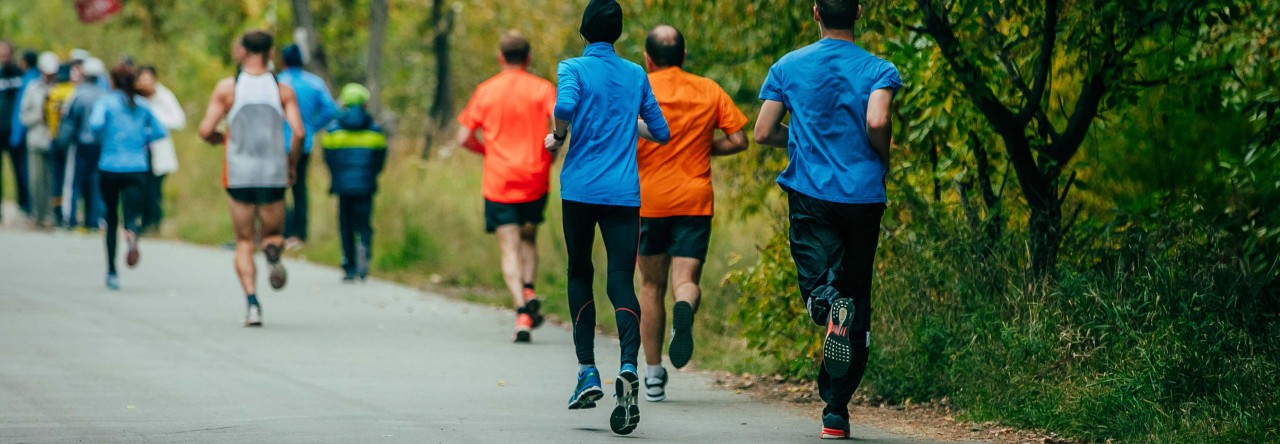Tim is a dear colleague of mine, who is one of the fastest runners in my circle of friends. His time at City2Surf 2015 was 56:36 which is 20 seconds faster than what I have ever done at that race. Tim also runs Marathon and Ultra Marathon at a competent level.
Today I showed up at his interval training session. He was running splits of 10min by heart rate zone to see how far he could go in each split. He was running round a park so I took several videos from all stages of his session and the recordings showed a pretty consistent running form entire the time.
First of all, Tim is a rear foot striker as you can see in this video:
Rear foot strikers are prone to over-stride. Over striding is when the contact point with the ground is away from the centre of body mass at landing time and it is a known cause of injuries.

There are ways to fix that. To push the centre of his body mass a bit forward, he can open his arms so that the weight of his hands would be moved ahead of him. His arms are too close to his chest whereas they should be open on the sides. Another one is that his torso is too straight up. There is a room to allow his upper body to be aligned with his back foot by leaning a bit forward. Doing so would move more weight forward to remove the pressure from the knee of his landing leg.
One thing I know he works on to make his running more efficient is to decrease his vertical oscillation. Vertical Oscillation is the height a runner would travel upwards on each stride. The total amount of these vertical movements can go as high as a sky scraper over a long running race, which is of course waste of energy as it is not on the sagittal plane (the forward direction of running).
At the following shot, he is landing on his left foot and I marked his lowest height around that moment.

Then he goes on his next stride to land on his right foot. I marked his highest point in the air by a red line. The force that moves him to that height is made with his right knee’s push off.

Through this stride I see an active toe-push off which is the main cause of his vertical oscillation. Toe push off is common among runners. As it is simply self explaining, it is an exertion of force by the fore end of the foot (either ball or toes). It is done with small muscles like calf muscle, scientific name: gastrocnemius. I would advise against using that muscle for propulsion due to its small size and low efficiency of using it for forward movement. Engage the bigger muscles in your legs as they work more efficiently over a long course of running. Using small muscles is like spending off a small reserve for a big job. Tim’s active push off can be simply identified by the change in the angle of his ankle joints. His feet peel off the ground. Another sign of active push-off is the delay in the back leg to leave the ground after the swinging foot passes the other knee. When runners lift off their feet as opposed to pushing off, they are expected to have their back foot leaving the ground almost immediately after their swinging foot passes the other knee (also known as the fall moment).
Back to the analysis, finally Tim lands on his other foot and surprisingly he is standing higher than where he was at his previous landing. The question is, what causes this asymmetrical landing?

One thing you might notice in these shots is his right knee (last image) does not bend as much as his left one does (first image).

Right knee’s angle at landing

Left knee’s angle at landing

Right knee’s angle at lowest body position

Left knee’s angle at lowest body position
You can see the consequence of this knee angle issue in the following shots. Due to the left knee dipping lower, the left hip moves or stays high while the right hip goes slightly down. This does not happen on the other side, meaning the angle of the knee is wide enough to keep the hips leveled. If hips are not level, ITB would be extended more. This band, which is connected to leg abductors, that work as stabliser at running, links hip to the top of tibial bone right on the outer side of knee. It already has a hard job because it is pulled from one end while tending to get lengthened. It takes both strength and flexibility to get the job done correctly. According to these snapshots, Tim’s left ITB is a bit under pressure compared to the right one and my interpretation is that the left leg-abductors are short to keep the hip level.


There are more into someone’s form to spot for improvement. Interesting points come out of slow motion analysis of runners’ workout.
Email me on rez@progressiverunning.com to sign up today and have your running form analysed to push your limits further away for bigger achievements in your running career.


Comments are closed.